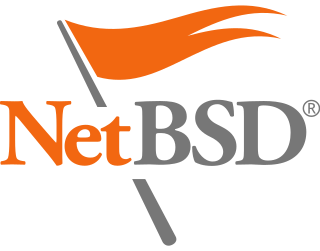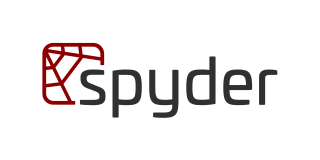
Simple DirectMedia Layer (SDL) is a cross-platform software development library designed to provide a hardware abstraction layer for computer multimedia hardware components. Software developers can use it to write high-performance computer games and other multimedia applications that can run on many operating systems such as Android, iOS, Linux, macOS, and Windows.
Middleware in the context of distributed applications is software that provides services beyond those provided by the operating system to enable the various components of a distributed system to communicate and manage data. Middleware supports and simplifies complex distributed applications. It includes web servers, application servers, messaging and similar tools that support application development and delivery. Middleware is especially integral to modern information technology based on XML, SOAP, Web services, and service-oriented architecture.
In computing, cross-platform software is computer software that is designed to work in several computing platforms. Some cross-platform software requires a separate build for each platform, but some can be directly run on any platform without special preparation, being written in an interpreted language or compiled to portable bytecode for which the interpreters or run-time packages are common or standard components of all supported platforms.
A game engine is a software framework primarily designed for the development of video games and generally includes relevant libraries and support programs such as a level editor. The "engine" terminology is similar to the term "software engine" used in the software industry.
A cross compiler is a compiler capable of creating executable code for a platform other than the one on which the compiler is running. For example, a compiler that runs on a PC but generates code that runs on an Android smartphone is a cross compiler.
The Netscape Portable Runtime, or NSPR, is a cross-platform abstraction layer library for the C programming language. It provides a uniform API for various operating system functions.
In computer programming, Intentional Programming is a programming paradigm developed by Charles Simonyi that encodes in software source code the precise intention which programmers have in mind when conceiving their work. By using the appropriate level of abstraction at which the programmer is thinking, creating and maintaining computer programs become easier. By separating the concerns for intentions and how they are being operated upon, the software becomes more modular and allows for more reusable software code.
An operating system abstraction layer (OSAL) provides an application programming interface (API) to an abstract operating system making it easier and quicker to develop code for multiple software or hardware platforms.
A JDBC driver is a software component enabling a Java application to interact with a database. JDBC drivers are analogous to ODBC drivers, ADO.NET data providers, and OLE DB providers.

ASCOM is an open initiative to provide a standard interface to a range of astronomy equipment including mounts, focusers and imaging devices in a Microsoft Windows environment.
Mac gaming refers to the use of video games on Macintosh personal computers. In the 1990s, Apple computers did not attract the same level of video game development as Microsoft Windows computers due to the high popularity of Microsoft Windows and, for 3D gaming, Microsoft's DirectX technology. In recent years, the introduction of Mac OS X and support for Intel processors has eased porting of many games, including 3D games through use of OpenGL and more recently Apple's own Metal API. Virtualization technology and Boot Camp also permit the use of Windows and its games on Macintosh computers. Today, a growing number of popular games run natively on macOS, though as of early 2019, a majority still require the use of Microsoft Windows.

Software portability is when source code can be easily made to run on different platforms. An aid to portability is the generalized abstraction between the application logic and system interfaces. When software with the same functionality is produced for several computing platforms, portability is the key issue for development cost reduction.

The Physics Abstraction Layer (PAL) is an open-source cross-platform physical simulation API abstraction system. It is similar to a physics engine wrapper, however it is far more flexible providing extended abilities. PAL is free software, released under the BSD license.
Knowledge Discovery Metamodel (KDM) is a publicly available specification from the Object Management Group (OMG). KDM is a common intermediate representation for existing software systems and their operating environments, that defines common metadata required for deep semantic integration of Application Lifecycle Management tools. KDM was designed as the OMG's foundation for software modernization, IT portfolio management and software assurance. KDM uses OMG's Meta-Object Facility to define an XMI interchange format between tools that work with existing software as well as an abstract interface (API) for the next-generation assurance and modernization tools. KDM standardizes existing approaches to knowledge discovery in software engineering artifacts, also known as software mining.
The Spacecraft Monitoring & Control (SM&C) Working Group of the Consultative Committee for Space Data Systems, which sees the active participation of 10 space agencies and of the Space Domain Task Force of the Object Management Group, is defining a service-oriented architecture consisting of a set of standard end-to-end services between functions resident on board a spacecraft or based on the ground, that are responsible for mission operations.

NetBSD is a free and open-source Unix operating system based on the Berkeley Software Distribution (BSD). It was the first open-source BSD descendant officially released after 386BSD was forked. It continues to be actively developed and is available for many platforms, including servers, desktops, handheld devices, and embedded systems.

Spyder is an open-source cross-platform integrated development environment (IDE) for scientific programming in the Python language. Spyder integrates with a number of prominent packages in the scientific Python stack, including NumPy, SciPy, Matplotlib, pandas, IPython, SymPy and Cython, as well as other open-source software. It is released under the MIT license.
Middleware is a type of computer software program that provides services to software applications beyond those available from the operating system. It can be described as "software glue".





